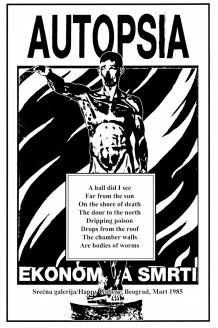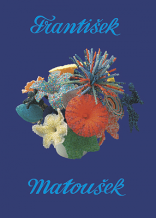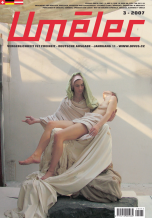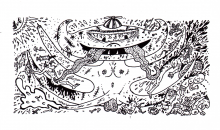| DIVUS LONDON: Stu Mead in London | a new book, a show and the mysterious man behind it | |||||||||||||
|
|||||||||||||
Stu Mead in London | a new book, a show and the mysterious man behind it29.04.2016 19:00 - 28.05.2016DIVUS LONDON | en |
|||||||||||||
|
After two years of digging in Stu's American and German archives, the first comprehensive book of his paintings and drawings is finally done. Come to see the show, see the book and meet Stu Mead in person.
- - - - - - - - - On Friday April 29 at 7 pm, works from the American period of provocative and hedonic painter Stu Mead will be possible to see for the first time in the United Kingdom. Rare early works will be accompanied with a selection of his latest paintings, drawings and prints. This underground American artist, now living in his Berlin haven, will also be uniquely present at the opening. A large, comprehensive book of Stu Mead’s paintings, drawings and prints will be available.
The life story of Stu Mead (b. 1955) is extraordinary and remained unknown until recently, when Divus editors began their work on his book. The first decade of his art career can be seen as a short history of modern painting and the application of avant-garde thoughts. Mead was simply a virtuoso of both style and conceptualization, as can be seen in his works from this period. But then he abandoned the path of a contemporary artist, and opted for a wild, sensuous and provocative imagination in which he took advantage of his astonishing painting skill and playful humour. He turned to taboos, sexual dreams, strange paradisiac visions, Elysian bestiality and scatology, using them as objects to analyse and creating disturbing Freudian metaphors, rather than simplifying these concepts. To avoid trouble, stay absolutely independent and keep his expenses low, Stu Mead took a chance and stayed in Europe after his second Berlin show in 2000. This exile was not planned; all of his possessions and primarily his early works were left in Minneapolis, and he has only returned to his country three times since. From then he began to live in Berlin, starting from scratch, but as a member of the End Art gallery circle, he quickly became an important figure within Kreuzberg’s liberal artworld. He also began his collaboration with Renhard Scheibner, another daredevil painter, and photographer Thomas Hauser. In France he continued working with Marseille-based publishing house Le Dernier Cri, where he published six limited editions of artbooks, and where the then-already expired Men Beg was reprinted. In 2004 Mead joined a group show called When Love Turns To Poison, where some of his and other artists’ works were attacked by audiences and destroyed. Four years later, his US solo show in Burbank’s Hyena gallery (2008) brought scandal and dispute, even within gallery members, and in 2015 Pakito Bolino from Le Derniere Cri received death threats for exhibiting Stu Mead and Reinhard Scheibner in France. Ivan Mečl
At the end of history, at the close of the story of the West that conservative visionaries have been promising, we must publish all the things we have dreamed of even if it might face universal rejection. The people who will be going through the ruins of our civilization should know what we were thinking about, what shaped our opinions and determined our actions – just as we know that ancient Greece was more than a rhetorical exercise and an oasis of puritan civic democracy. This book is being published at a time when war is again more moral than a sexual orgy, a woman cannot beat a man with impunity, America no longer understands Dada and is turning into Sparta, England does nothing other than build houses and make pop music, France has forgotten why it once admired the Marquis de Sade, and Germany is so proper that it prefers to do nothing at all.
Excerpt from text by Ivan Mečl They are the sweetest girls one could draw, with little dresses, bows, panties; little girlfriends of Hans Christian Andersen or Lewis Carroll. Little witches who gather power the way some people gather mushrooms. Little girls who see their bodies as something natural. They don’t choose what they see: something that is new for them, inartificial, natural, ungrasped. And they learn to grasp it. To firmly grasp in their little hands the hems of their panties and the penises of large men. Plush animals held in a tight embrace are suddenly capable of giving other pleasures as well. After a while, our senses are so aroused that all it takes is a painted bear with a whistle and a bunny watching a girl by the fireplace with a yearning look on its face, and our minds imagine a zoophile group sex session all on their own. Even the devil is shocked by the girls, and for good reason. Stu’s pictures are an authentic depiction of that rare moment when a girl discovers her power, which is contained not just in her genitals. In Music School, one girl is sitting apart from a trio of fussy-looking friends. She is slouched in her chair, legs spread wide, playing a violin without a bow, hollering with all her might. Stu says that she has just discovered jazz. Which could be the same as sex. And vice versa.
As sometimes happens to other artists whose subjects are in the transitional period from childhood to adulthood, there are people who find that Stu’s art exists on the boundary of what is legal. These charges are an unconscious and civilized way of masking the deeper taboo of the inviolability or untouchability of beings in transition. But Stu does not view himself as such a being: “I identify with the girls in my paintings. And I also identify equally with the boys and men (who often look like me) as well as the horses, cows and dogs. I’m a handicapped man, but still I’m a man. I’m not outside gender categories. I am not ‘in transition’. I’m just an artist with a perverted imagination trying to make good paintings.” Excerpt from text by Lenka Klodová
29.04.2016 19:00
- 28.05.2016
Recommended articles
|
|||||||||||||
|
04.02.2020 10:17
Letošní 50. ročník Art Basel přilákal celkem 93 000 návštěvníků a sběratelů z 80 zemí světa. 290 prémiových galerií představilo umělecká díla od počátku 20. století až po současnost. Hlavní sektor přehlídky, tradičně v prvním patře výstavního prostoru, představil 232 předních galerií z celého světa nabízející umění nejvyšší kvality. Veletrh ukázal vzestupný trend prodeje prostřednictvím galerií jak soukromým sbírkám, tak i institucím. Kromě hlavního veletrhu stály za návštěvu i ty přidružené: Volta, Liste a Photo Basel, k tomu doprovodné programy a výstavy v místních institucích, které kvalitou daleko přesahují hranice města tj. Kunsthalle Basel, Kunstmuseum, Tinguely muzeum nebo Fondation Beyeler.
|







![[b]Stu Mead in London[/b] | a new book, a show and the mysterious man behind it](http://88.208.121.86/upload/articles/56c5c1130446c.detailThumb.png)























































 New book by I.M.Jirous in English at our online bookshop.
New book by I.M.Jirous in English at our online bookshop.
Comments
There are currently no comments.Add new comment